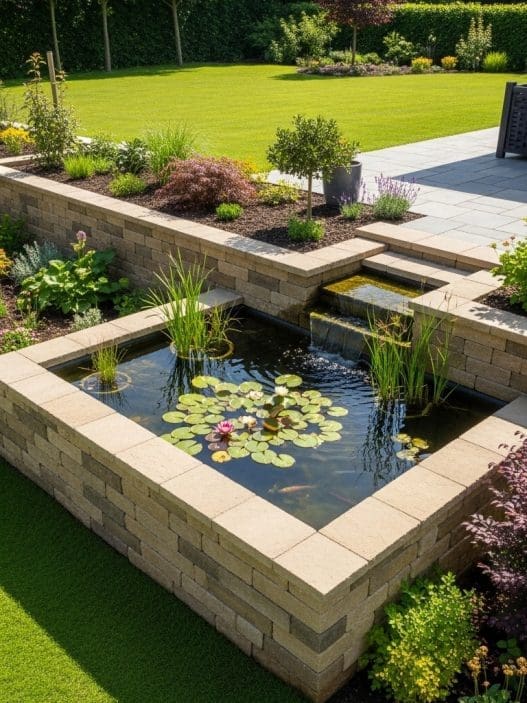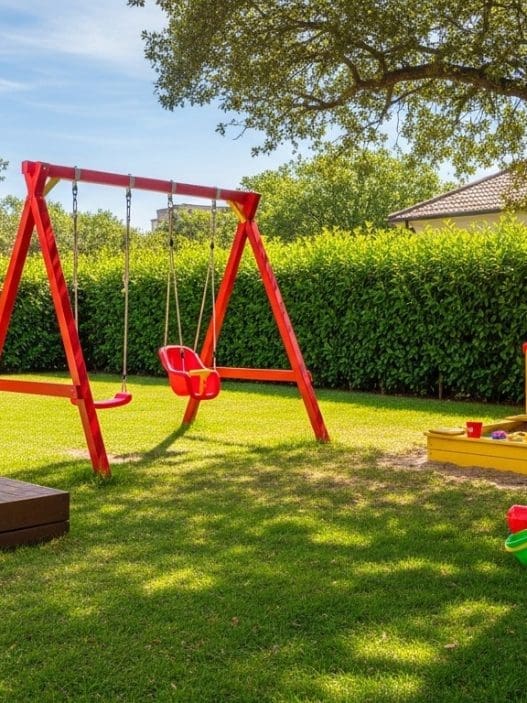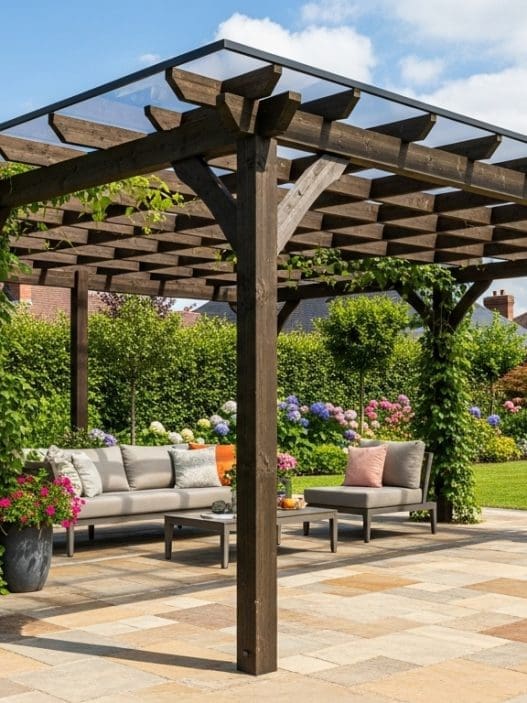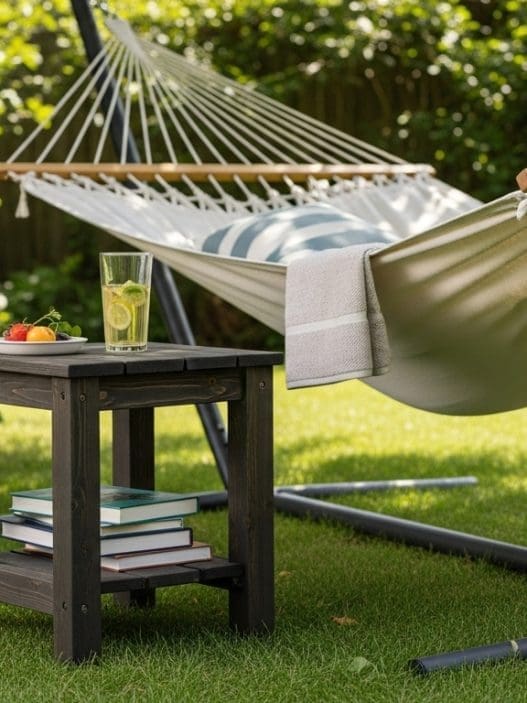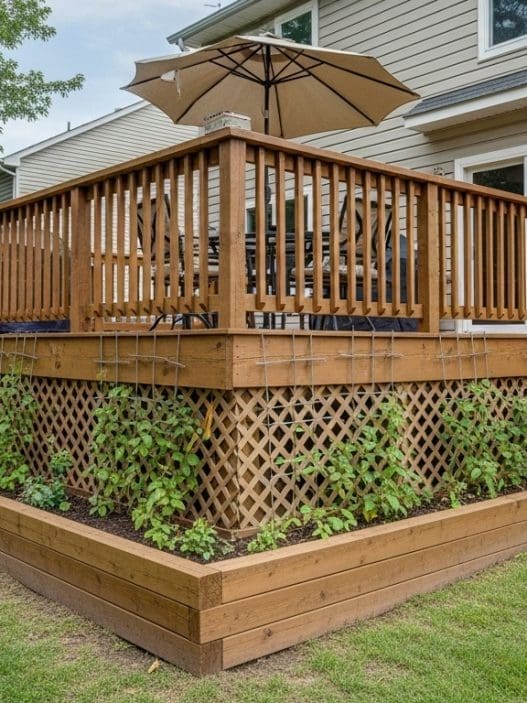If your yard is uneven, sloped, or difficult to manage, landscaping retaining walls can provide both beauty and functionality. These structures hold back soil, prevent erosion, and create clear visual zones, all while adding curb appeal and structure to your property. Whether you’re dealing with a hilly garden or simply want to add terraced charm to your backyard, there are many creative ways to incorporate retaining walls into your landscaping.
In this guide, we’ll explore 20 smart ideas for using landscaping retaining walls in practical and decorative ways. Each idea includes the logic behind the approach and how it contributes to a stable, stylish, and functional outdoor environment. Whether you’re interested in natural stone or cost-effective concrete blocks, these tips are designed for homeowners and DIYers looking to get the most out of their space.
1. Use Tiered Retaining Walls for Slope Management
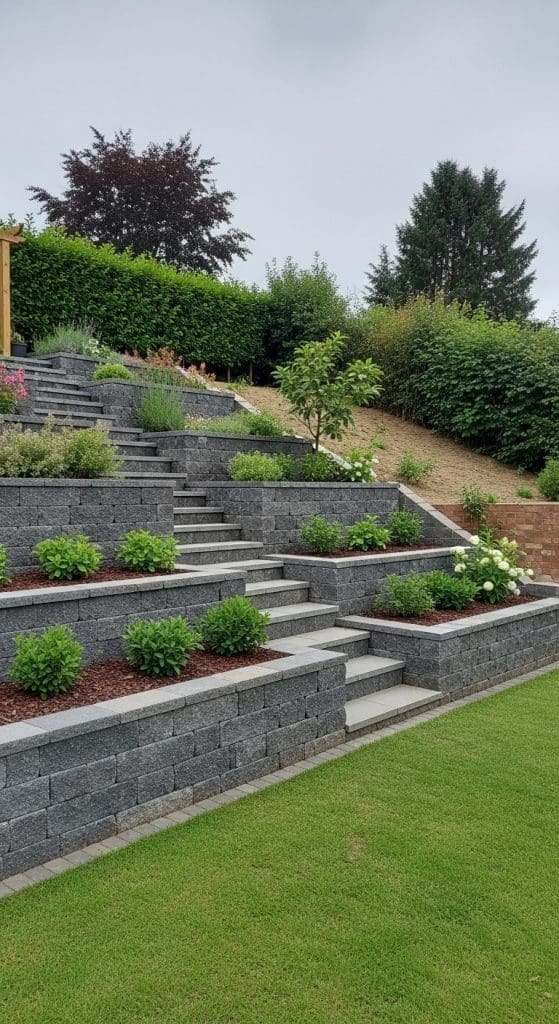
Tiered landscaping retaining walls allow us to break up a steep slope into flat, usable terraces. This approach reduces soil pressure on any single wall, improving structural integrity and water drainage. By dividing the slope into smaller steps, we gain multiple planting areas, reduce runoff, and make the terrain more accessible.
2. Create Raised Garden Beds with Stone Retaining Walls

Raised garden beds formed with retaining walls offer improved drainage and soil control. By lifting planting areas above ground level using stone or block walls, we prevent root rot and create defined growing zones. These beds also reduce bending and allow for targeted soil amendments, making gardening easier and more productive.
3. Add Built-in Seating with Low Retaining Walls

Low retaining walls double as functional seating areas in outdoor designs. By building walls around patios or fire pits at bench height, we eliminate the need for separate furniture. This creates a seamless flow in the landscape while supporting soil or plant beds on one side and offering relaxation space on the other.
4. Control Erosion on Hillsides with Curved Retaining Walls

Curved landscaping retaining walls follow the natural contour of a hill, which helps distribute pressure evenly and reduces soil displacement. The curved shape not only strengthens the wall’s design but also blends better with organic landscapes. This method is especially useful for areas prone to water runoff and surface erosion.
5. Define Driveways with Retaining Wall Borders
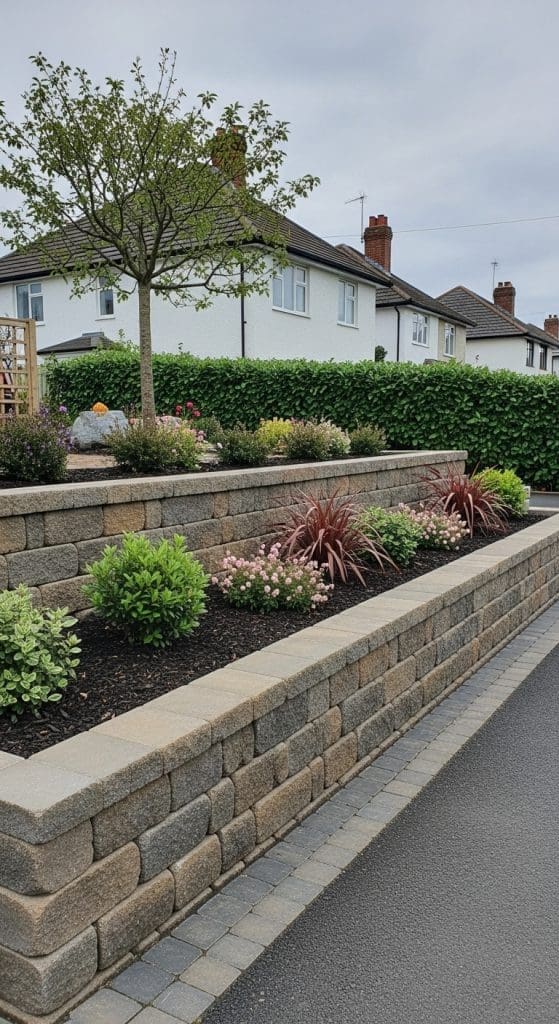
Framing a driveway with retaining walls creates a polished, structured look while stabilizing adjacent soil. We recommend this approach for homes on sloped lots, as it prevents soil from spilling onto the pavement and improves water flow around the driveway. It also allows for elevation changes without creating steep, unstable edges.
6. Design Outdoor Steps with Integrated Retaining Walls
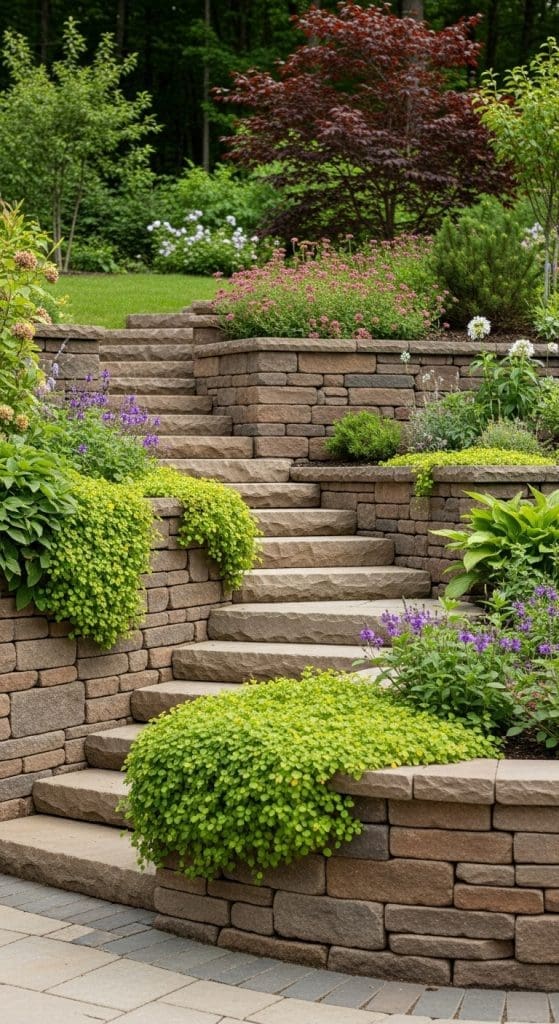
Outdoor staircases built into landscaping retaining walls offer safe transitions on sloped properties. By incorporating steps into the retaining structure, we maintain continuity in materials and form. This also prevents washouts or soil collapse around footpaths, improving both safety and longevity.
7. Build Garden Borders with Natural Stone Retaining Walls

Natural stone retaining walls serve as durable, decorative garden borders. These walls help contain plant roots, manage mulch, and provide a timeless aesthetic. We often use them to create contrast between lawns and garden beds while stabilizing loose soil around foundations or tree bases.
8. Use Retaining Walls to Create a Sunken Patio
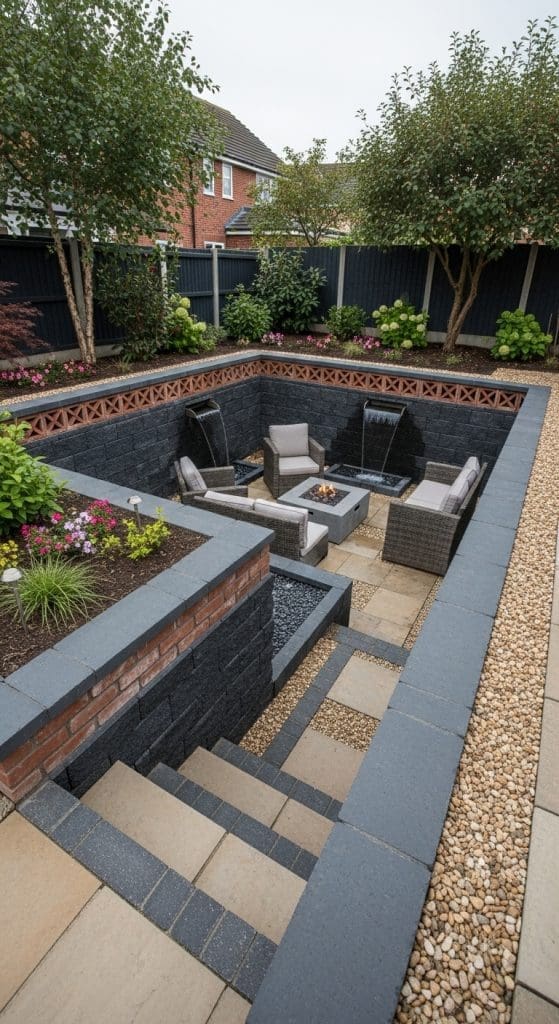
By excavating a section of your yard and surrounding it with retaining walls, we create a private sunken patio space. The walls act as both structural support and visual enclosures, reducing wind exposure and creating a cozy outdoor room. This technique is ideal for maximizing usable space in sloped backyards.
9. Install Segmental Concrete Block Walls for DIY Efficiency
Segmental retaining walls use interlocking concrete blocks that stack without mortar. These are ideal for DIY landscaping retaining walls due to their ease of installation and predictable layout. The design includes built-in locking features that improve wall strength while remaining flexible enough to resist cracking.
10. Incorporate Drainage Systems Behind Retaining Walls
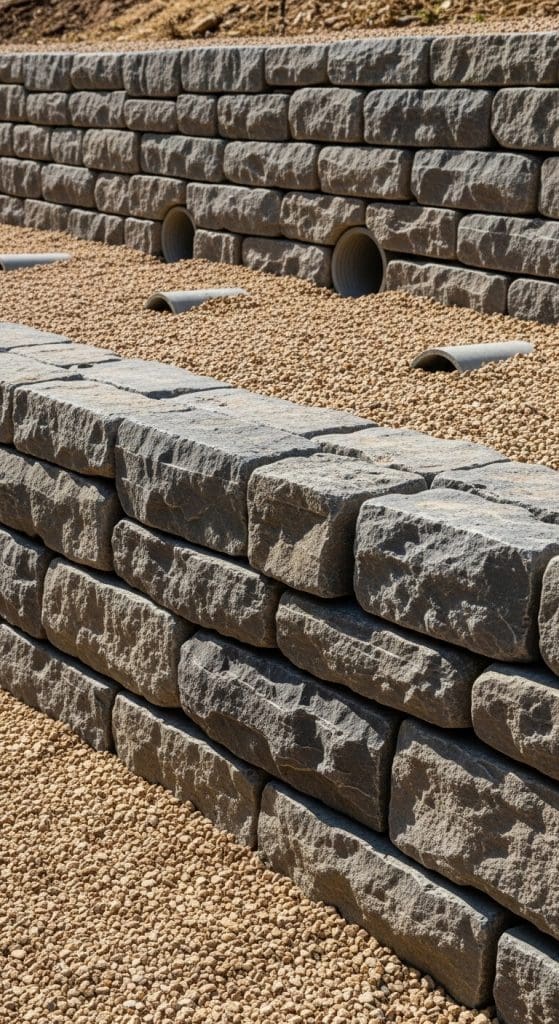
Proper drainage is critical behind any landscaping retaining wall to prevent hydrostatic pressure buildup. We recommend installing gravel backfill and perforated drainage pipes behind the wall to allow water to escape. Without this system, water accumulation can weaken the structure and cause premature failure.
11. Add Lighting to Retaining Walls for Nighttime Appeal
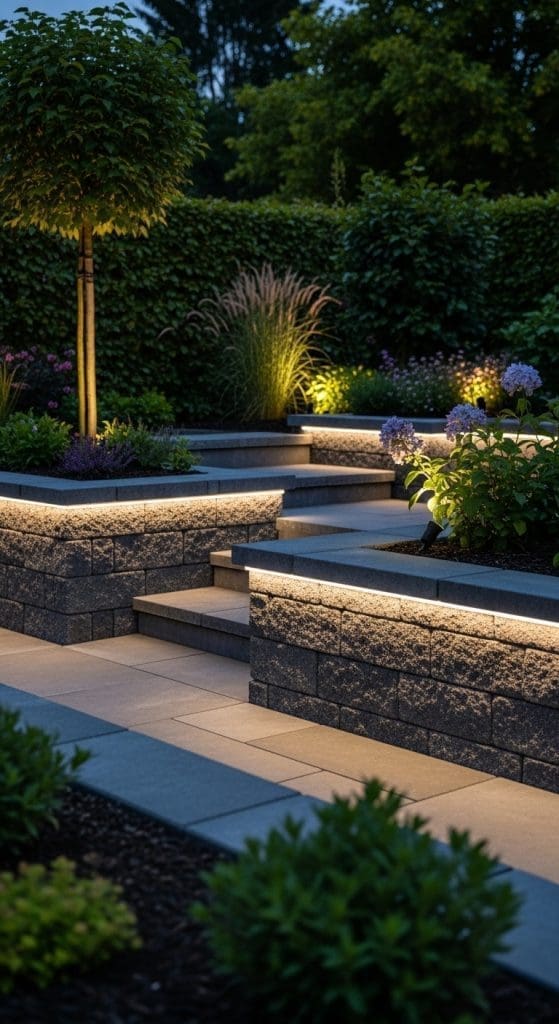
Installing LED strip lights or wall-mounted fixtures along retaining walls improves nighttime visibility and adds ambiance. Lighting enhances safety around stairs and patios while highlighting textures and shapes in the wall materials. We use low-voltage systems for energy efficiency and minimal disruption to the wall’s structure.
12. Frame Flower Beds with Short Decorative Retaining Walls
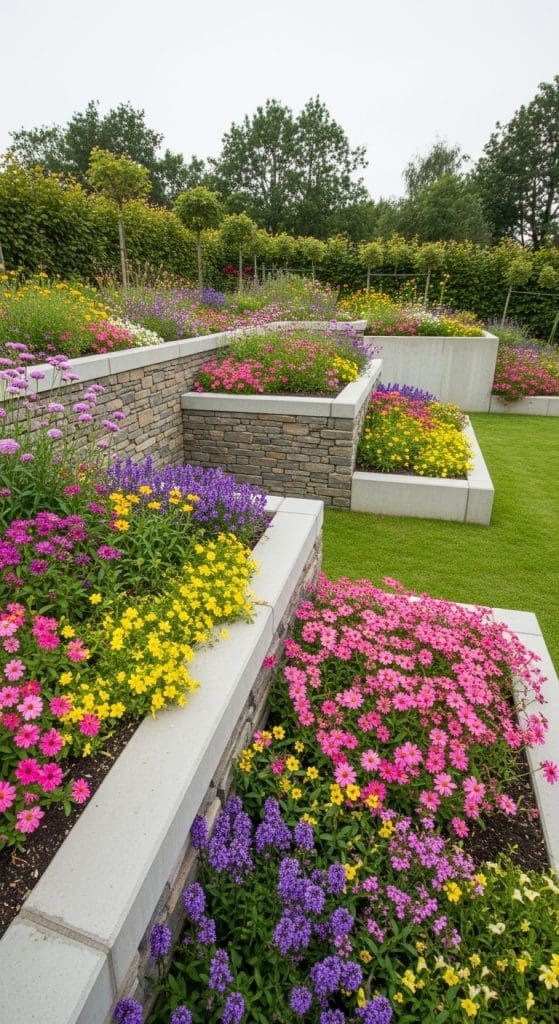
Short retaining walls around flower beds keep soil, mulch, and water confined to the planting area. This not only improves garden maintenance but also adds crisp definition between beds and walkways. These walls can be constructed from brick, stone, or concrete to match surrounding hardscapes.
13. Use Wood Retaining Walls for a Rustic Landscape
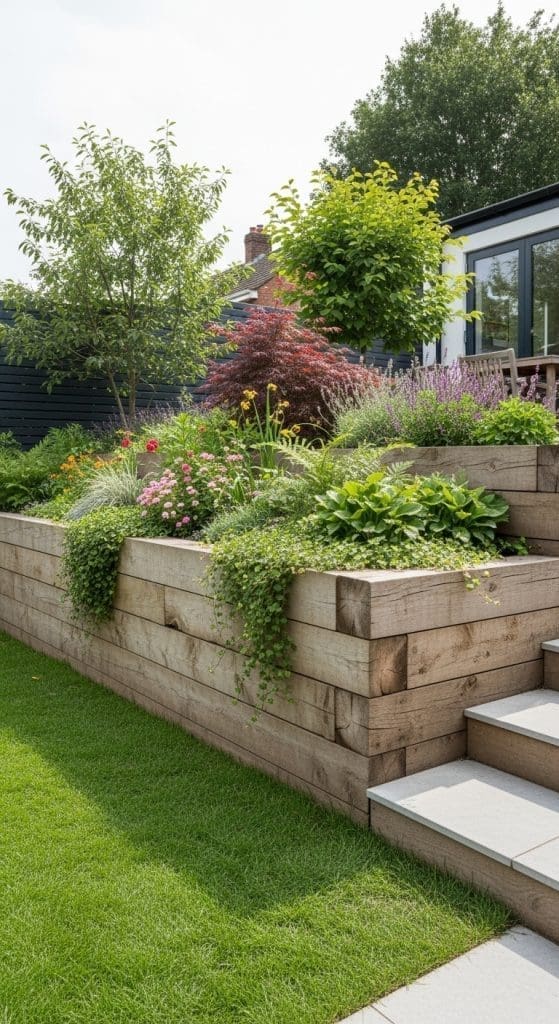
Wood landscaping retaining walls offer a warm, natural appearance suited for rural or rustic garden designs. Pressure-treated timber resists decay and is often more cost-effective than stone. We recommend reinforcing wood walls with deadmen or metal anchors to improve durability on slopes.
14. Build Retaining Walls to Support a Raised Lawn Area

For sloped properties, we can flatten sections of the yard by building retaining walls to support a raised lawn. This creates a level surface for playing, entertaining, or gardening. Retaining walls in this application must be well-engineered to bear the added weight of compacted soil and turf.
15. Anchor Sloped Paths with Side Retaining Walls
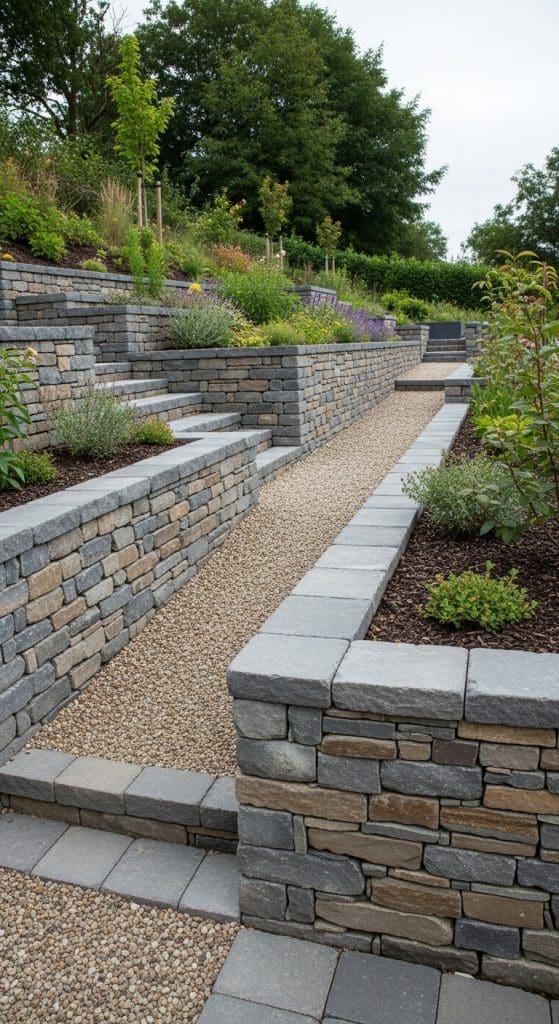
Retaining walls along the sides of sloped paths provide stability and edge definition. These side walls hold back soil and prevent pathway erosion while also creating a neat, clean look. We recommend including small weep holes or drainage gaps to allow moisture to escape and avoid wall damage.
16. Create a Water Feature Backdrop with Retaining Walls
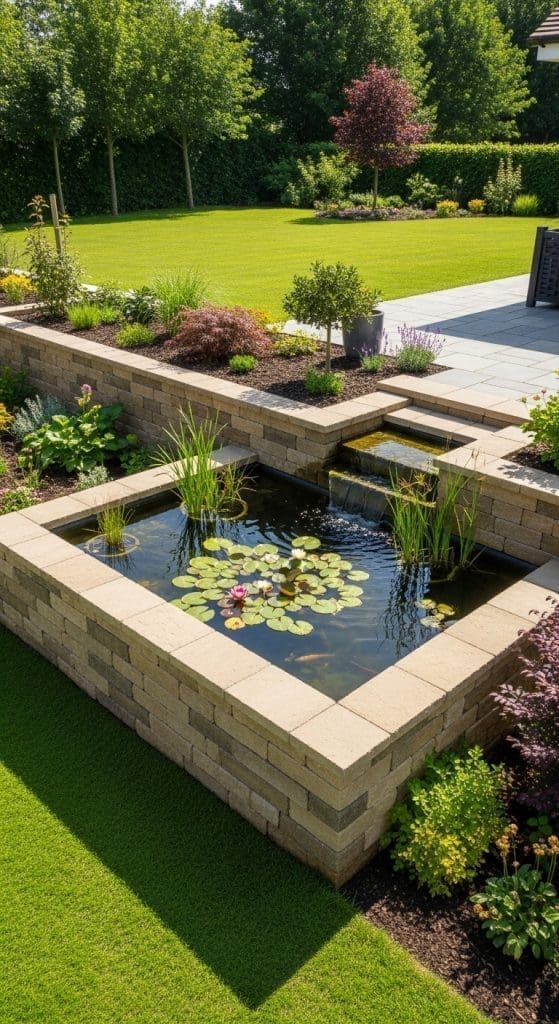
Retaining walls are effective backdrops for waterfalls or raised ponds. Their structure supports elevated water sources and helps contain water flow, making them ideal for cascading features. With proper waterproofing and grading, we can ensure that the wall remains stable and leak-free over time.
17. Add Vertical Planters to Retaining Wall Surfaces
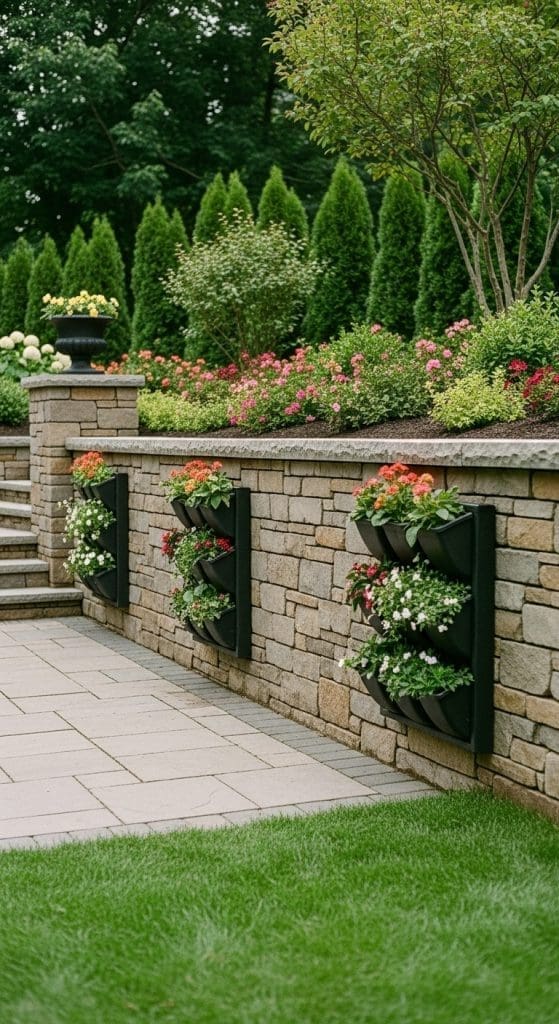
Integrating planter pockets into retaining walls adds greenery without needing extra space. These vertical planters are often carved into block or stone walls to house small plants, herbs, or succulents. We suggest choosing drought-tolerant species to thrive in limited soil volume and maximize wall appeal.
18. Use Gabion Walls for an Industrial Landscape Look

Gabion retaining walls consist of metal cages filled with rocks or recycled concrete. They are strong, permeable, and ideal for both residential and commercial landscapes. The weight of the stone resists soil pressure, while the open structure allows drainage, reducing hydrostatic stress behind the wall.
19. Build L-Shaped Retaining Walls for Corner Gardens
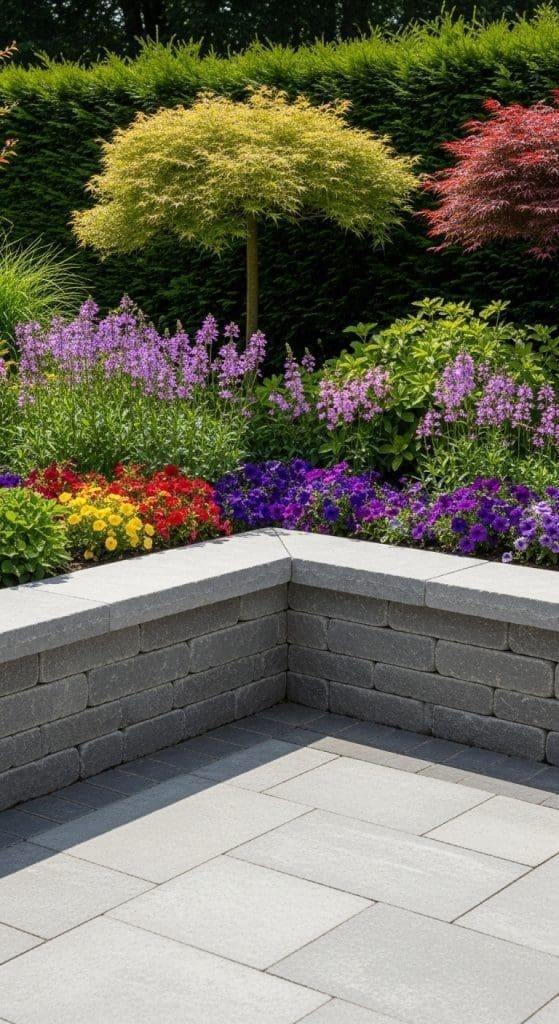
L-shaped retaining walls work well in corner spaces where two elevation changes meet. By tying the walls together at a 90-degree angle, we improve structural stability and optimize planting space. These corners can be used for seating, decorative displays, or tiered flower beds.
20. Blend Hardscape and Softscape with Terraced Retaining Walls
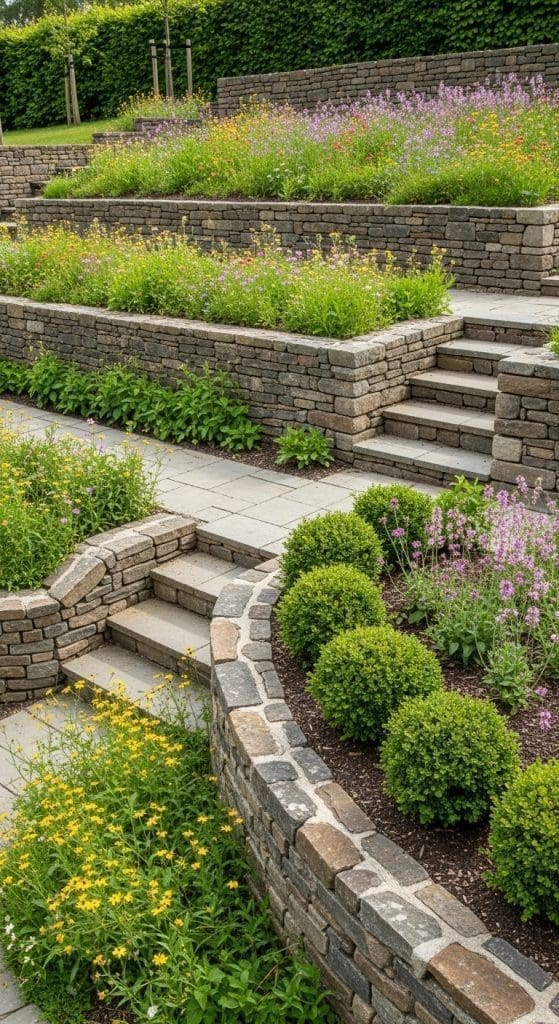
Terraced retaining walls combine hardscape structure with softscape elements like grass, flowers, or shrubs. Each level can be planted differently to add color and variety. We recommend using consistent materials across terraces for cohesion while incorporating diverse plant heights for visual interest.












